Chinese Medicine Regulatory Office
Site Menu
General Knowledge of Toxic Chinese Herbal Medicines
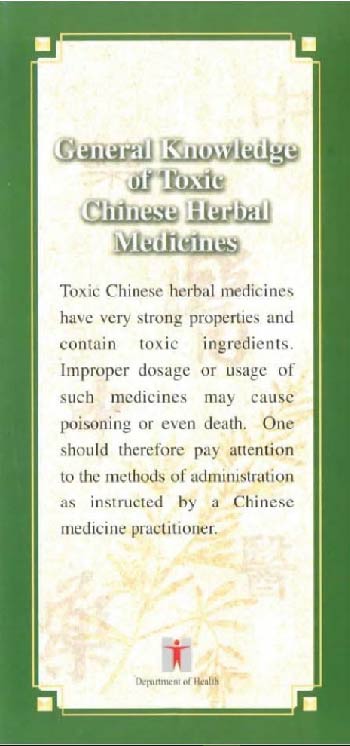
General Knowledge of Toxic Chinese Herbal Medicines
Toxic Chinese herbal medicines have very strong properties and contain toxic ingredients. Improper dosage or usage of such medicines may cause poisoning or even death. One should therefore pay attention to the methods of administration as instructed by a Chinese medicine practitioner.
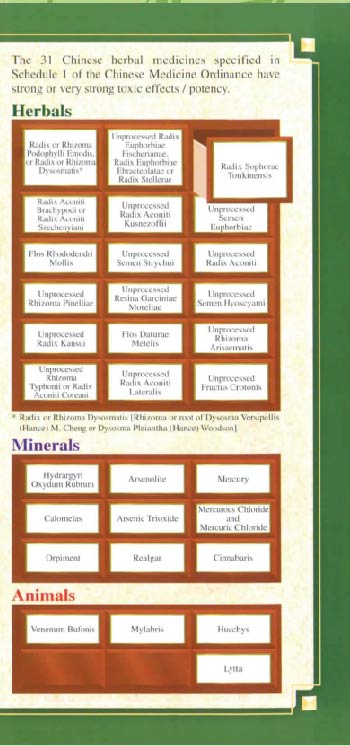
The 31 Chinese herbal medicines specified in Schedule 1 of the Chinese Medicine Ordinance have strong or very strong toxic effects / potency.
Herbals:
Radix or Rhizoma Podophylli Emodis, or Radix or Rhizoma Dysosmatis*; Unprocessed Radix Euphorbiae Fischerianae, Radix Euphorbiae Ebracteolatae or Radix Stellerae; Radix Sophorae Tonkinensis; Radix Aconiti Brachypodi or Radix Aconiti Szechenyiani; Unprocessed Radix Aconiti Kusnezoffii; Unprocessed Semen Euphorbiae, Flos Rhododendri Mollis; Unprocessed Semen Strychni; Unprocessed Radix Aconiti; Unprocessed Rhizoma Pinelliae; Unprocessed Resina Garciniae Morellae; Unprocessed Semen Hyoscyami; Unprocessed Radix Kansui; Flos Daturae Metelis; Unprocessed Rhizoma Arisaematis; Unprocessed Rhizoma Typhonii or Radix Aconiti Coreani; Unprocessed Radix Aconiti Lateralis; Unprocessed Fructus Crotonis.
* Radix or Rhizoma Dysosmatis [Rhizoma or root of Dysosma Versipellis (Hance) M.Cheng or Dysosma Pleiantha (Hance) Woodson]
Minerals:
Hydrargyri Oxydum Rubrum; Arsenolite; Mercury; Calomelas; Arsenic Trioxide; Mercurous Chloride and Mercuric Chloride; Orpiment; Realgar; Cinnabaris.
Animals:
Venenum Bufonis; Mylabris; Huechys; Lytta.
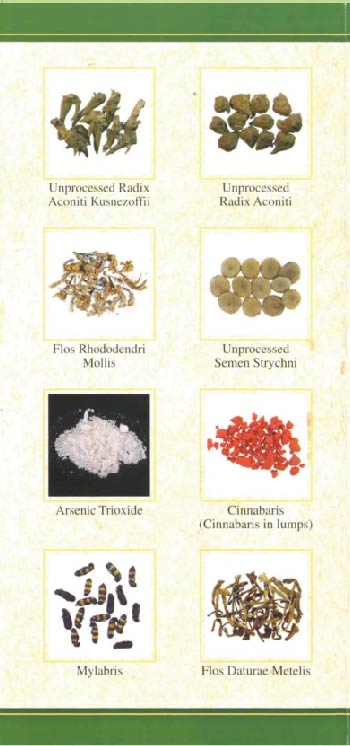
Diagrams for Unprocessed Radix Aconiti Kusnezoffii, Unprocessed Radix Aconiti, Flos Rhododendri Mollis, Unprocessed Semen Strychni, Arsenic Trioxide, Cinnabaris (Cinnabaris in lumps), Mylabris, Flos Daturae Metelis
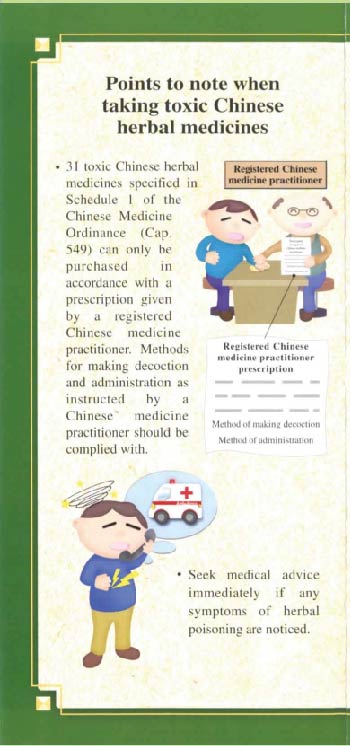
Points to note when taking toxic Chinese herbal medicines
•31 toxic Chinese herbal medicines specified in Schedule 1 of the Chinese Medicine Ordinance (Cap. 549) can only be purchased in accordance with a prescription given by a registered Chinese medicine practitioner. Methods for making decoction and administration as instructed by a Chinese medicine practitioner should be complied with.
•Seek medical advice immediately if any symptoms of herbal poisoning are noticed.
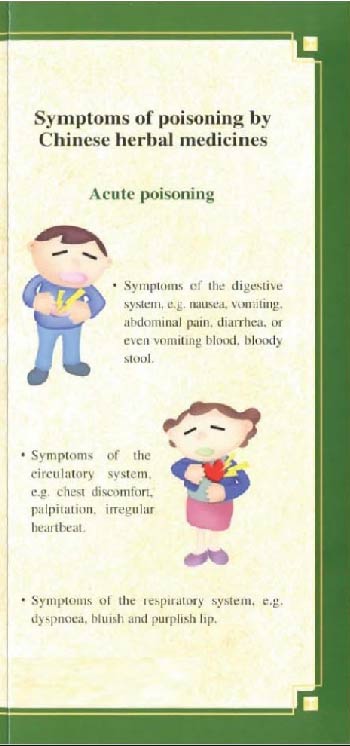
Symptoms of poisoning by Chinese herbal medicines
Acute poisoning
•Symptoms of the digestive system, e.g. nausea, vomiting, abdominal pain, diarrhea, or even vomiting blood, bloody stool.
•Symptoms of the circulatory system, e.g. chest discomfort, palpitation, irregular heartbeat.
•Symptoms of the respiratory system, e.g. dyspnoea, bluish and purplish lip.
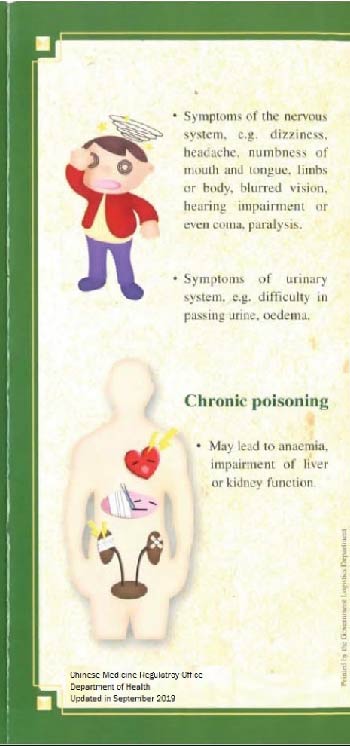
•Symptoms of the nervous system, e.g. dizziness, headache, numbness of mouth and tongue, limbs or body, blurred vision, hearing impairment or even coma, paralysis.
•Symptoms of urinary system, e.g. difficulty in passing urine, oedema.
Chronic poisoning
•May lead to anaemia, impairment of liver or kidney function.
Chinese Medicine Regulatory Office
Department of Health
Website: www.cmro.gov.hk